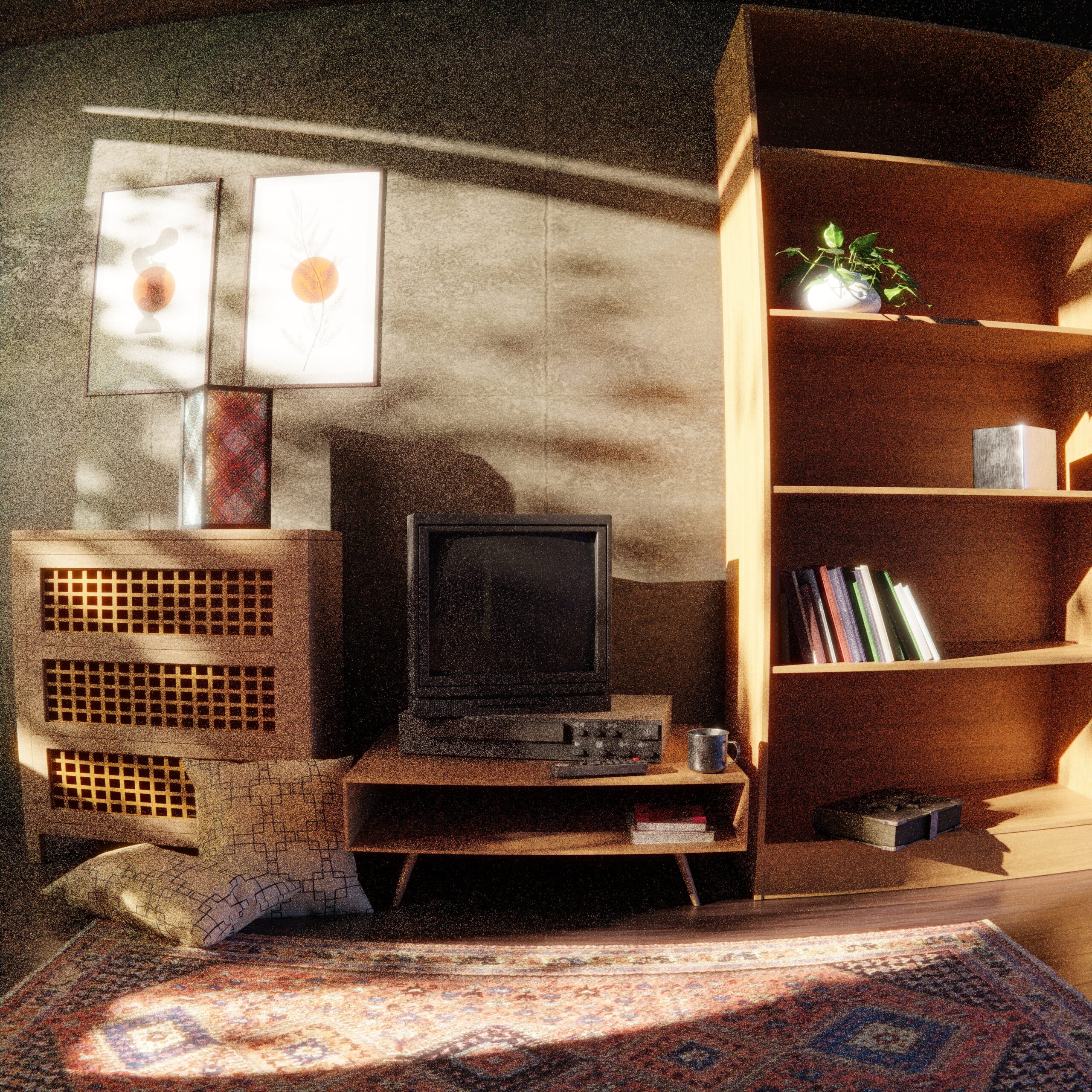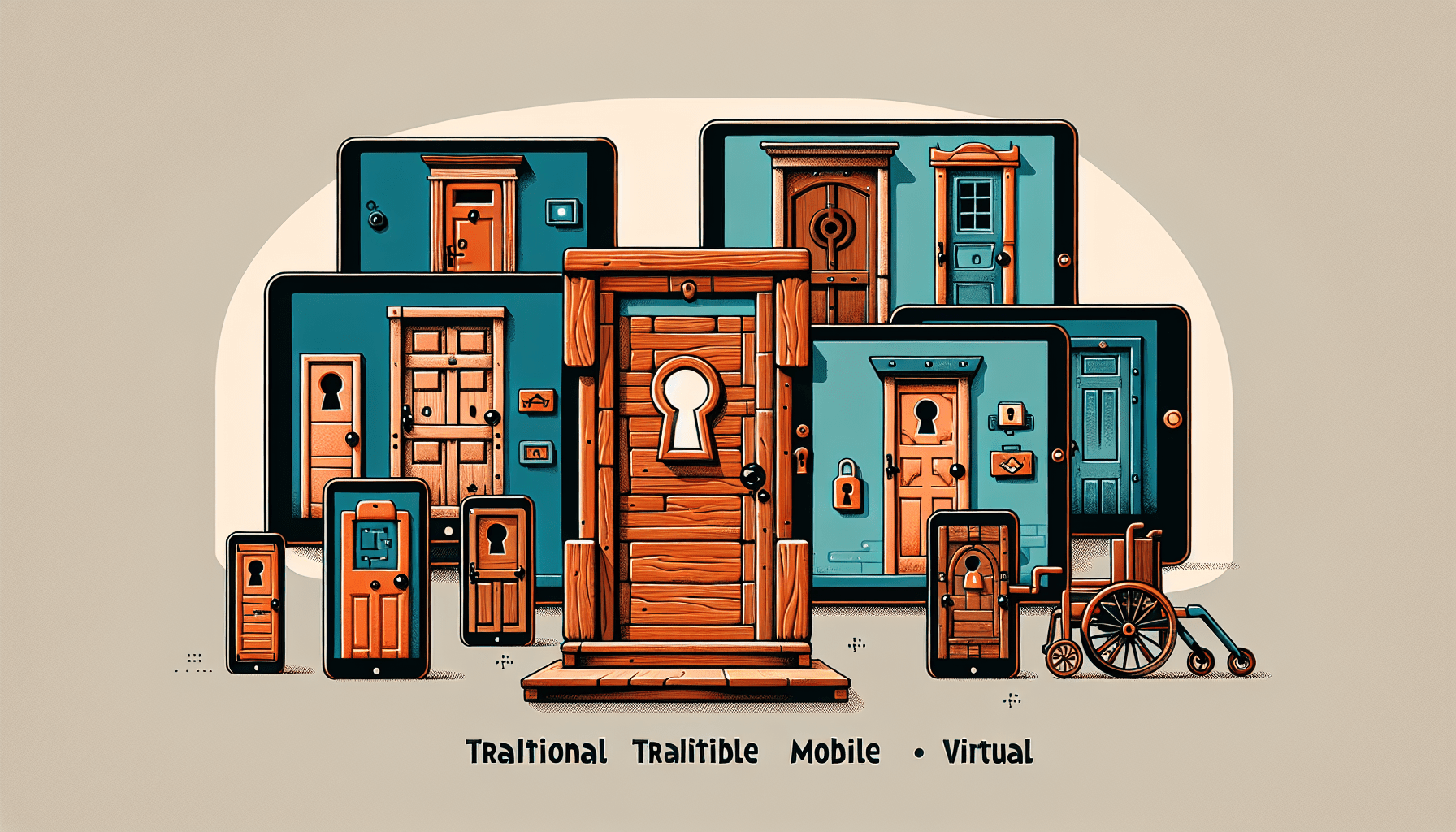Have you ever wondered about the dimensions of an escape room game? Whether you’re a seasoned escape room enthusiast or considering trying one for the first time, understanding the size of these immersive adventures can add to the excitement. Escape room games vary in size, ranging from compact rooms that accommodate two to four players, to larger spaces capable of hosting larger groups. These dimensions are carefully designed to challenge your puzzle-solving skills and create a sense of intrigue and mystery. So, let’s explore the sizes of escape rooms and discover the thrilling world that awaits you within their walls.

Physical Space Requirements
Room size
The size of an escape room can vary depending on the specific theme and storyline of the game. However, a standard escape room typically ranges from 200 to 400 square feet. This size allows for sufficient space to incorporate various puzzles, clues, furniture, and props while maintaining a comfortable environment for players to navigate and interact within. It’s important to consider the balance between providing enough space for players to move around freely and ensuring that the room is not so large that it becomes overwhelming or detracts from the immersive experience.
Number of rooms
Escape rooms can consist of a single room or have multiple interconnected rooms. The choice of the number of rooms will largely depend on the complexity of the game’s storyline and the desired level of challenge. Single-room escape rooms are more common and typically easier to design and operate. They provide a cohesive and contained experience for players, allowing them to focus on solving puzzles and progressing through the game. Multi-room escape rooms, on the other hand, offer an added layer of complexity and immersion. Players must not only solve puzzles but also navigate through different spaces, creating a more dynamic and expansive gameplay experience.
Overall square footage
The overall square footage required for an escape room depends on the number of rooms and the room size. A single-room escape room with a size of 200 to 400 square feet generally provides enough space for a compelling experience. For multi-room escape rooms, additional square footage is necessary to accommodate the different interconnected spaces. It’s important to ensure that each room has sufficient space for puzzles, props, and furniture, as overcrowding the rooms can hinder the players’ ability to solve puzzles and fully immerse themselves in the game. Overall, the square footage requirement will vary depending on the specific design and intricacy of the escape room game.
Equipment and Props
Puzzles and clues
Puzzles and clues are essential components of an escape room game, and the equipment and props used to create them contribute to the overall immersive experience. From locks and keys to riddles and codes, a wide variety of puzzle types can be incorporated into an escape room. These puzzles can be physical, requiring players to manipulate objects or unlock mechanisms, or they can be mental, challenging players to solve complex riddles or decipher cryptic codes. In terms of props, the possibilities are endless. Furniture, decorations, and interactive elements all contribute to the theme and enhance the gameplay. Thoughtful selection and placement of puzzles and props are crucial for creating an engaging and challenging escape room experience.
Furniture and fixtures
Furniture and fixtures in an escape room serve both functional and thematic purposes. Depending on the theme of the game, furniture can be used to create a specific ambiance or to provide interactive elements for players to interact with. Tables, chairs, shelves, and cabinets can be used to hide clues or provide surfaces for puzzles. Fixtures such as lights, sound systems, and special effects equipment add to the immersive experience by setting the mood and enhancing the overall atmosphere of the room. It’s important to ensure that furniture and fixtures are well-maintained, safe for use, and do not detract from the gameplay or pose any safety risks to the players.
Technology and audiovisual elements
Incorporating technology and audiovisual elements into an escape room can greatly enhance the gameplay experience. From hidden cameras and microphones for monitoring and providing hints to audio tracks, video projections, and interactive displays, these elements can add depth and interactivity to the game. Technology can also be used to create special effects, trigger puzzles, or provide timers and countdowns for time-limited challenges. However, it’s important to strike a balance between technology and more traditional puzzle-solving elements to ensure that the game remains accessible and engaging for players of all ages and technological backgrounds.
Player Capacity
Minimum number of players
The minimum number of players required for an escape room game will depend on the design of the game and the challenges involved. In general, most escape rooms have a minimum requirement of at least two players. This ensures that there is sufficient collaboration and interaction between players to solve puzzles and progress through the game. Solo play can be challenging in some escape rooms, as certain puzzles may require teamwork or physical coordination. Additionally, having multiple players adds to the social aspect of the experience, allowing for shared discoveries and the pooling of different skills and perspectives.
Maximum number of players
On the other end of the spectrum, the maximum number of players that can participate in an escape room game will largely depend on the size and layout of the room(s). Larger escape rooms can accommodate more players, whereas smaller rooms may have stricter limitations. For a single-room escape room, the maximum number of players is typically around six to eight, as having too many players can lead to overcrowding and potential difficulty in solving puzzles. In a multi-room escape room, the maximum capacity may be higher, allowing for larger groups to navigate through different spaces. However, it’s important to strike a balance to ensure that each player is actively engaged and has a meaningful role within the game.
Time Duration
Average game length
The average length of an escape room game typically ranges from 60 to 90 minutes. This duration provides sufficient time for players to explore the room, solve puzzles, unravel the storyline, and ultimately escape. The game length is carefully designed to maintain a sense of urgency and keep players engaged throughout the experience without feeling rushed. It allows players to fully immerse themselves in the game, strategize, and collaborate with their teammates. However, it’s important to note that the actual game length can vary depending on the complexity of the puzzles, the players’ problem-solving abilities, and the flow of gameplay.
Time limits
To further enhance the challenge and create a sense of pressure, escape rooms often incorporate time limits. These time limits can vary depending on the difficulty level of the game and the preferences of the players. Commonly, escape rooms have time limits ranging from 45 minutes to 90 minutes. The time limit adds an element of excitement and urgency, as players must race against the clock to solve puzzles and escape within the given timeframe. It also helps ensure that groups can complete the game in a reasonable amount of time, allowing for efficient customer turnover and maximizing the utilization of the escape room facility.

Theme and Storyline
Size implications
The theme and storyline of an escape room can have implications for the size and layout of the physical space. Some themes may require larger square footage to accurately depict certain environments or to incorporate specific set pieces. For example, a spaceship-themed escape room may require more space to simulate the interior of a spacecraft, complete with control panels and futuristic props. On the other hand, simpler themes may require less space but can still be highly engaging and immersive. It’s crucial to carefully consider the size implications of the chosen theme to ensure that the space can accommodate the desired level of detail and interactivity.
Detailed settings
The success of an escape room heavily relies on the attention to detail in creating a captivating and believable setting. Thoroughly fleshing out the setting and incorporating relevant details not only enhances the immersion but also provides essential clues and puzzle elements. Whether it’s a mysterious laboratory, an ancient Egyptian tomb, or a crime scene, each setting should be meticulously designed to reflect the theme and engage the players’ senses. The choice of props, lighting, sound effects, and even scents can play a significant role in creating an authentic atmosphere. The more detailed and cohesive the setting, the more players will feel fully immersed in the story and motivated to overcome the challenges.
Accessibility
ADA compliance
When designing an escape room, it’s important to consider accessibility and ensure compliance with the Americans with Disabilities Act (ADA) guidelines. This includes ensuring that the physical space is accessible to individuals with mobility challenges, providing wheelchair-accessible entrances, ramps, and pathways. Additionally, the puzzles and clues should be created in a way that accommodates participants with visual or hearing impairments. Consideration should be given to alternative communication methods or tactile clues that can be incorporated into the game to ensure that players with disabilities can fully participate and enjoy the escape room experience.
Physical limitations
Escape rooms often involve physical activities, such as reaching for objects, lifting items, or moving around the room. It’s essential to take into account any potential physical limitations of players and design the game in a way that accommodates various abilities. Providing options for alternate ways to solve puzzles or incorporating teamwork and collaboration can ensure that players with physical limitations can actively participate and contribute to the game. Clear communication and instructions should be given to clarify any physical challenges or limitations that players may encounter within the escape room.
Age restrictions
Escape rooms can be enjoyed by individuals of various ages, but it’s important to establish age restrictions to ensure the safety and appropriateness of the game. Some escape rooms may have specific age requirements due to the nature of the challenges or the intensity of the game. For example, a horror-themed escape room may impose an age restriction to ensure that younger participants do not find the experience too alarming or distressing. It’s crucial for escape room operators to clearly communicate any age restrictions to potential players and provide alternative options or family-friendly games for younger participants.

Safety Considerations
Emergency exits
Safety should always be a top priority when designing and operating an escape room. Ensuring that the physical space has clearly marked and accessible emergency exits is crucial in the event of any unforeseen circumstances or emergencies. The escape room layout should be carefully planned to allow for easy and safe evacuation in case of fire, power outages, or other emergencies. Regular inspections and maintenance of the emergency exits, including testing of exit signage and emergency lighting, should be conducted to ensure their reliability and functionality.
Health and security protocols
To provide a safe and comfortable experience for players, escape room operators should establish health and security protocols. These protocols can include measures such as regular cleaning and sanitization of the room and props, proper ventilation, and fire safety precautions. It’s also essential to have clear procedures and guidelines in place for handling emergencies, including first aid protocols and communication with emergency services. By prioritizing the health and safety of both players and staff, escape room operators can build trust and ensure a positive and secure environment for everyone involved.
Supervision and monitoring
Having trained staff members present to supervise and monitor the escape room game is important for both safety and customer service purposes. Staff members can provide guidance, assistance, and hints to players when needed, ensuring that the game progresses smoothly and that players feel supported throughout their experience. Additionally, staff members can monitor players’ interactions within the room via video cameras or other surveillance systems to address any potential concerns or escalate emergency situations promptly. By having a well-trained and attentive team, escape room operators can ensure a safe and enjoyable experience for all participants.
Variations and Customization
Portable and mobile escape rooms
In addition to traditional fixed-location escape rooms, there is a growing trend of portable and mobile escape rooms. These variations offer the flexibility to bring the escape room experience to different locations, such as events, parties, or corporate team-building sessions. Portable escape rooms are designed to be easily set up and dismantled, allowing for quick deployment and customization to suit various spaces and themes. This versatility makes them a popular choice for those looking to offer escape room experiences in non-traditional settings or seeking to host larger groups.
Virtual and online escape rooms
With advances in technology, virtual and online escape rooms have gained popularity in recent years. Virtual escape rooms allow players to participate remotely from the comfort of their own homes. These experiences involve interactive puzzles, clues, and challenges that are presented through online platforms. Online escape rooms often incorporate video conferencing or live chat features to enable real-time communication and collaboration between team members. Virtual and online escape rooms offer flexibility, convenience, and accessibility to players who may not have access to physical escape rooms or prefer the convenience of remote participation.

Economic Factors
Investment costs
The initial investment costs for establishing an escape room business can vary depending on factors such as location, size, theme complexity, and technological requirements. Costs will typically include the lease or purchase of a suitable space, construction or renovation expenses, purchasing or creating puzzles, props, furniture, and fixtures, as well as acquiring necessary technology and audiovisual equipment. Marketing and promotional expenses should also be considered. It’s important to carefully plan and budget for these costs to ensure a sustainable and profitable business venture.
Operational costs
Once the escape room is established, there are ongoing operational costs that need to be factored into the business plan. These costs include rent or mortgage payments, utilities, insurance, regular maintenance and repairs, wages for staff members, marketing and advertising expenses, and ongoing investments in new puzzles and props to keep the experience fresh and engaging. It’s imperative to carefully track and manage these operational costs to ensure that the pricing and revenue potential of the escape room business remain sustainable and profitable.
Pricing and revenue potential
Pricing for escape rooms can vary depending on factors such as location, competition, game complexity, and target market. Escape room operators should conduct market research to determine the appropriate pricing structure that reflects the value of the experience while remaining competitive. The revenue potential of an escape room business will depend on factors such as the number of bookings, the capacity utilization rate, the average ticket price, and the ability to attract repeat customers. Developing effective marketing strategies, offering promotional packages, and providing exceptional customer service are essential for maximizing revenue potential and ensuring the long-term success of the business.
Expansion Possibilities
Expansion to larger spaces
As the popularity of escape rooms continues to grow, escape room operators may consider expanding their business by moving into larger spaces. This expansion allows for the creation of more elaborate and immersive game experiences, potentially accommodating larger groups of players. With a larger space, operators have more flexibility to design multi-room escape experiences or introduce new game themes. Expansion to larger spaces also offers the opportunity to host corporate events, parties, or team-building activities, increasing the revenue potential and diversifying the customer base.
Increased complexity and scale
Expanding an escape room business presents the opportunity to increase the complexity and scale of the games. With larger spaces and more resources, operators can introduce more advanced technologies, intricate puzzles, and interactive set pieces. This increased complexity and scale can create even more engaging and challenging experiences for players, appealing to enthusiasts who are seeking greater immersion and difficulty. By continually pushing the boundaries and introducing new elements, escape room operators can attract a loyal customer base and stay ahead of the competition.
In conclusion, the size, equipment, player capacity, time duration, theme, accessibility, safety considerations, variations, economic factors, and expansion possibilities all play crucial roles in creating and operating an escape room game. By carefully considering these factors and tailoring them to the target audience and desired gameplay experience, escape room operators can create immersive, exciting, and profitable escape room games that captivate players and keep them coming back for more.
